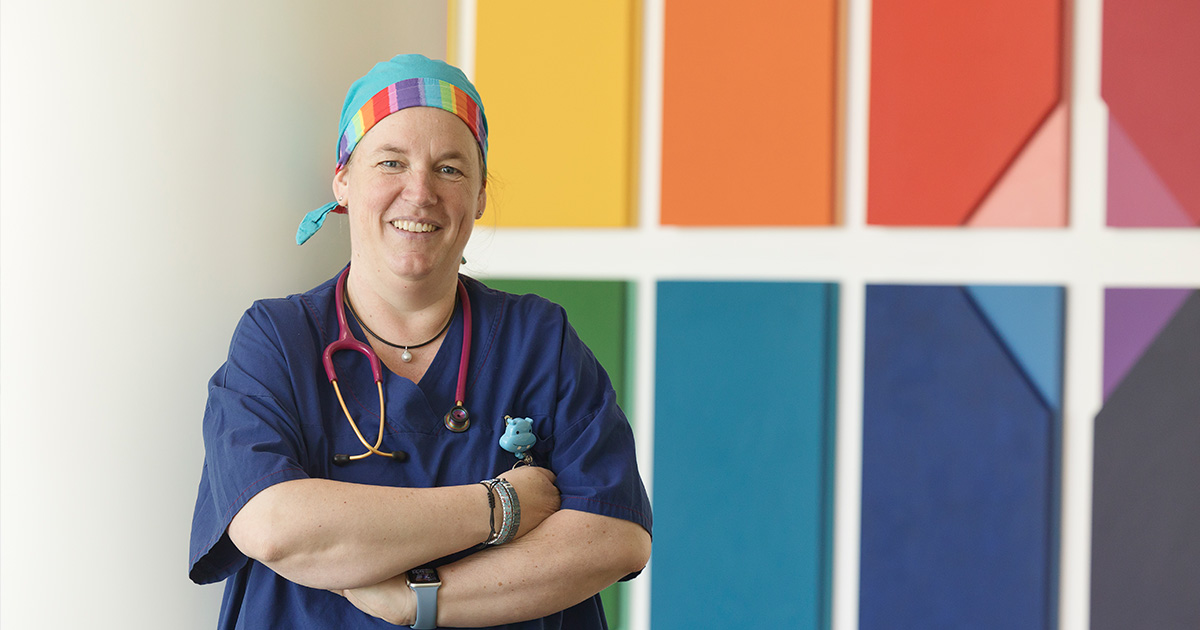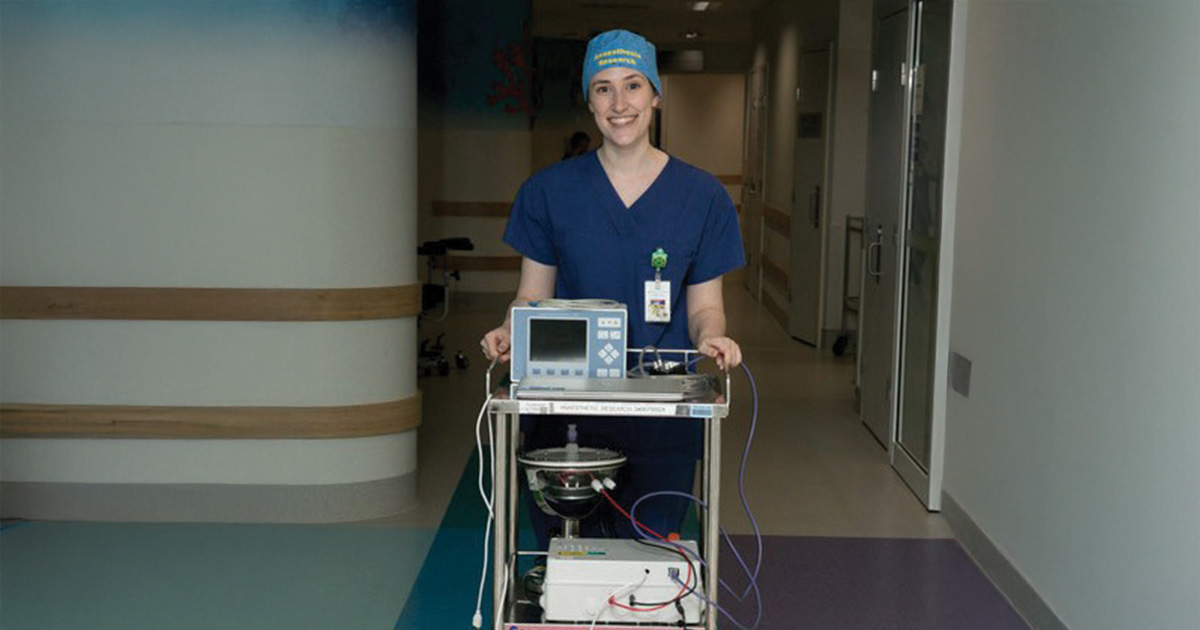Every year in Australia, one in 20 children has surgery.
When kids are having surgery, the most common problem that can occur during anaesthesia is a respiratory adverse event.
Therefore, lung function is of extreme importance and being able to continuously study lung function during surgery helps doctors improve patient care.
In a world-first, the Perioperative Medicine team at The Kids Research Institute Australia - headed by Perth Children’s Hospital and The University of Western Australia paediatric anaesthetist Professor Britta Regli-von Ungern-Sternberg - has designed and tested a novel piece of equipment which allows researchers to continuously study lung mechanics during anaesthesia and surgery.
The equipment is the result of an international collaboration with biomedical engineers at the Laboratory of Respiration Technologies at Politecnico di Milano in Milan, Italy. Designed, built and bench-tested in Milan, the novel equipment was flown to WA accompanied by a biomedical engineer, who worked with the research team to integrate it into the theatres at Perth Children’s Hospital.
The equipment uses the continuous Forced Oscillation Technique (FOT) to monitor lung function by sending sound waves into
the lungs and measuring how they bounce back. This tells researchers more about the child’s lung function, for example if there is any narrowing of the airways.
While FOT machines are used regularly in awake patients, this is the first continuous FOT equipment to be used in paediatric anaesthesia, which can be used during spontaneous and mechanical ventilation.
Professor Regli-von Ungern-Sternberg said the team had successfully tested the equipment in two trials in children having surgery at Perth Children’s Hospital but it needed to be adapted for use in very small children, such as newborns and small babies.
“To extend the use of this equipment to neonates and infants, we needed to develop new dead space connectors,” Professor Regli-von Ungern-Sternberg explained.
“Dead space is the space where we move air during ventilation which is not taking part in actual gas exchange, and we need to keep this as small as possible.
“Therefore, all connectors must be as tiny as possible.”
After consulting with the Italian engineers and with anaesthetists, the team paired up with ADARSH Australia, a WA-owned and operated fabricator of component parts to design new dead space connectors.
“We worked with ADARSH, undertaking several rounds of Computer Assisted Designing (CAD) and 3D printing to custom-make a T-connector that eliminatesthe need for several connector pieces, thereby significantly reducing the size and therefore the dead-space,” Professor Regli-von Ungern-Sternberg said.
The next stage involves testing the new dead space prototype for newborns by using artificial lungs, before taking the equipment into theatre.
Best practice for 'difficult' airways

Babies under 12 months of age can have what is known as ‘difficult’ airways. When babies are small, their airways are also small and, therefore, can be tricky when it comes to anaesthesia.
Professor Britta Regli-von Ungern-Sternberg - head of the Perioperative Medicine team at The Kids Research Institute Australia, Consultant Paediatric Anaesthetist at Perth Children’s Hospital, and Chair of Paediatric Anaesthesia at The University of Western Australia - explains how the physiology of these small babies plays a part.
“Small babies have a very small oxygen reserve, meaning that if ventilation is interrupted, their oxygen levels drop very fast,” Professor Regli-von Ungern-Sternberg said.
“At the same time, their oxygen consumption is very high, making them extremely prone to hypoxemia, a low level of oxygen in the blood.
“This makes airway management extremely important when these small babies are having surgery.”
Professor Regli-von Ungern-Sternberg was one of 23 leading paediatric anaesthesia airway management experts from around the world who developed guidelines on airway management in babies under one year of age.
These include the American Society of Anesthesiologists guidelines, the European Society of Anaesthesiology and Intensive Care/British Journal of Anaesthesia guidelines and the translation of the European guidelines into German.
Professor Regli-von Ungern-Sternberg said the guidelines improved patient care in general and were particularly important for emergency situations.
“In those situations where people need to act fast and teams need to work closely together, we all need to be on the same page,” Professor Regli-von Ungern-Sternberg explained.
“The neonatal guidelines summarise best practice and give clear evidence on how to best work in a difficult scenario — they have changed routine clinical practice around the world.
“An individual anaesthetist - unless working in a highly specialised tertiary centre - will not be confronted with a difficult neonatal airway that often, so guidance is very important to ensure best care.”
The guidelines provide evidence-based recommendations to assist clinicians around the world to provide the best medical care and ensure patient safety. The new guidelines were published in September 2023 and have been implemented around the world.

